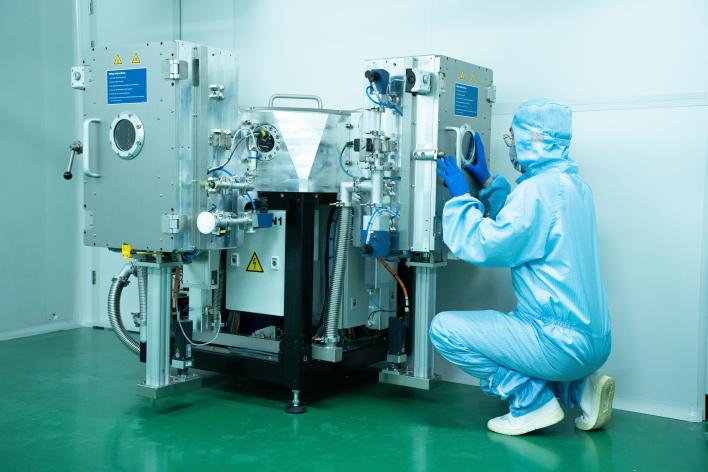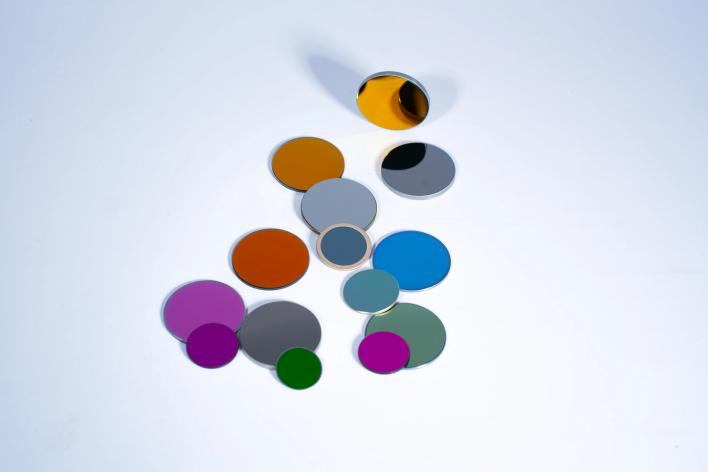Want to know the big difference between ND filters and Infrared filters? These cool tools help make pictures and science stuff better! They’re used in cameras, science gear, and even smart gadgets. Each one does a special job to control light in its own way. This guide makes it super easy to understand what they do and how to pick the right one. Plus, we’ll talk about why Bodian’s filters are awesome for pros.
What Is an ND Filter
What It Is and Why It’s Used
ND filters, or Neutral Density filters, are like sunglasses for cameras or science tools. They cut down all light evenly, without messing up colors. Unlike filters that change colors or block some light, ND filters keep colors looking real. They’re super handy when there’s too much light, like in sunny photos, movie-making, or fancy science measurements.
Types of ND Filters
ND filters come in different kinds for different jobs. Fixed ND filters block a set amount of light. Variable ND filters let you twist them to block more or less light, using stacked lenses. Graduated ND filters are darker at one end and clear at the other. They’re great for pictures with bright skies and dark ground, like sunsets.
For super exact science stuff, like lasers or medical sensors, special ND filters are used. They’re picked for how well they block light and handle heat.
Where You Use Them
ND filters are great for:
Long pictures in bright daylight, like blurry water or clouds
Controlling how much is in focus in bright light
Balancing light when you’ve got lots of light sources
They’re used in cameras and science gear to make things look or work better.
What Is an Infrared Filter
What It Is and Types
Infrared filters, or IR filters, pick out special light called infrared, usually past 700nm. There are two main kinds:
IR-pass filters: Let infrared light through but block regular light
IR-cut filters: Stop infrared light but let regular light pass
These are super important for things like night vision, medical tests, or heat checks.
How They Work
IR filters use a cool trick called optical interference. They have special coatings on stuff like silicon or germanium. These coatings bounce or soak up light you don’t want. This makes a super picky window that only lets certain infrared light through or keeps it out.
Where You Use Them
At Bodian, IR filters are used in:
Security cameras for seeing in the dark
Heat cameras for checking machines or night driving
Medical tools like blood testers or infrared health checks
Smart gadgets like touch-free panels or motion sensors
Cool Products
Bodian makes awesome IR filters like infrared narrowband filters (INBP), long pass (ILP), short pass (ISP), and anti-reflection (IAP). Each one is made for special infrared jobs and tough places.
ND Filter vs Infrared Filter
Light Range Difference
ND filters work in regular light you can see, from 400–700 nm. They cut down all this light the same way. IR filters focus on infrared light, from 700–1000+ nm. They either let this light through or block it, depending on the type.
What They Do
| Feature | ND Filter | IR Filter |
| Main Job | Cut regular light evenly | Block or let infrared light |
| Changes Colors | Nope | Often makes colors look weird |
| Big Use | Control bright light | Heat or infrared pictures |
| Made From | Glass, quartz | Germanium, silicon, ZnSe, CaF₂ |
How They Change Pictures
ND filters keep colors looking real. They’re great when you want natural tones. IR filters can make pictures look strange, with bright plants or dark skies. This is called the “Wood effect” and is cool for artsy photos.
What Is an IRND Filter (Hybrid)
What’s an IRND Filter
An IRND filter is a mix of an ND filter and an IR-cut filter. It cuts down regular light like an ND filter but also blocks infrared light. This fixes a problem where cameras leak infrared light, which messes up colors in pictures or science tools.
When to Use It
IRND filters are super useful for:
Movie-making with cameras that pick up extra infrared
Medical gear needing exact light control
Fancy science tools that need clean light without extra infrared
Where to Get Them
Bodian makes custom IRND filters with super strong blocking (OD6 or more), great light passing, and tough builds. These are popular for space pictures, laser tools, and smart security cameras.
How to Choose the Right Filter
For Regular Photos
If you want long blurry shots or to handle bright light, ND filters are enough. They’re easy to use and don’t change colors. They’re perfect for nature or building photos.
For Infrared or Science Stuff
For heat pictures, material checks, or security, pick an IR filter or IR-pass filter. These make sure only the right infrared light gets through, which is key for work outside regular light.
Fixing Infrared Leaks
If your pictures have weird colors, like purple or magenta in shadows, your ND filter might let infrared sneak in. Cheap or uncoated filters do this a lot. An IRND filter fixes this by blocking infrared and keeping regular light clean.
Practical Tips and Considerations
Setting Up and Focusing
Using IR filters can mess with focus because infrared light focuses differently than regular light. Use gear with “IR-index marks” or tweak it by hand for sharp results.
Quality Is a Big Deal
Cheap ND filters might add weird colors. Bad IR filters can wear out in wet places. Bodian tests all filters across all light to make sure they’re super tough and work great (ISO 9001, RoHS, REACH certified).
Mixing Filters
For fancy science gear, you might use ND and IR filters together or an IRND filter. This makes sure light is just right across regular and infrared ranges without losing clearness.
More About Filters
ND filters and IR filters are like magic glasses for cameras and science tools. ND filters help with too much light, like when the sun’s super bright. IR filters let you see or block special infrared light for cool stuff like night vision or heat checks. Bodian makes filters that are super exact and tough, so your pictures or tools work awesome.
Fun Facts About Filters
Did you know filters have been used in cameras forever? Old ones were just colored glass! Now, Bodian’s IR filters can see heat from machines or people in the dark. ND filters let you take dreamy photos of waterfalls, even in bright sun. They’re used in movies, space gear, and even smart doorbells!
Why Bodian Is the Best
Bodian doesn’t just make filters—they make the best ones for your job. Their ND, IR, and IRND filters are super clear, strong, and made just for you. With over 40 years of know-how, they test every filter to make sure it’s perfect. Whether you’re snapping nature pics or building science tools, Bodian has your back with top-notch gear.
Conclusion
ND filters and IR filters do different but helpful jobs in photos, science tools, and smart systems. Knowing what they do helps you pick the right one. Whether you’re taking cool landscape shots, making medical gear, or setting up security cameras, choosing ND, IR, or IRND filters makes a big difference.
Bodian gives you awesome custom filters for any job. With their smart tech, tough builds, and careful testing, you get filters that work great every time. Pick Bodian for your next project, and you’ll see the difference!
FAQs
Q1: Can I use an ND filter for infrared photos?
A: Nope, regular ND filters aren’t made for infrared shots. They might let infrared sneak in. Use an IR-pass filter or IRND filter for good infrared results.
Q2: What makes Bodian filters better than cheap ones?
A: Bodian filters are super exact, let lots of light through, block deep (OD6), and can be made just for you. They’ve got over 40 years of filter-making smarts.
Q3: Is an IRND filter better than using ND and IR-cut filters separately?
A: Lots of times, yup! IRND filters are easier, cut down on mistakes, and work better by mixing both jobs in one layer.



